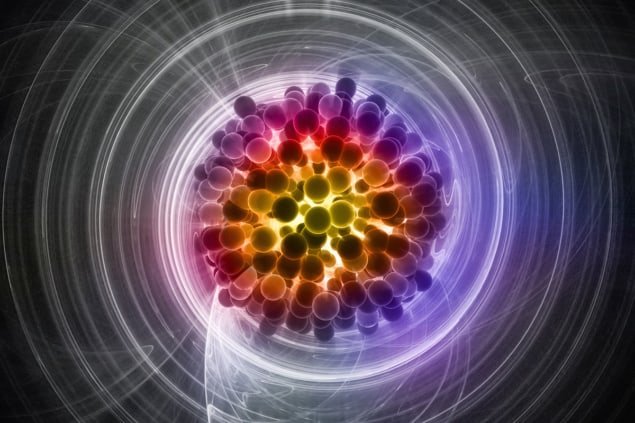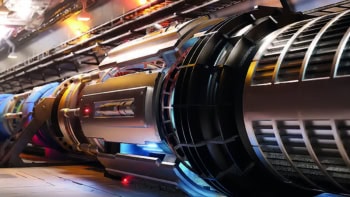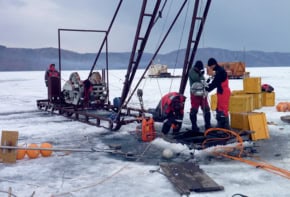
A striking similarity between flows of liquids and a hot, dense state of matter called a quark–gluon plasma (QGP) has been revealed in calculations done by Kostya Trachenko at Queen Mary University of London, Vadim Brazhkin at the Institute for High Pressure Physics near Moscow and Matteo Baggioli at the Autonomous University of Madrid. The trio’s analysis could lead to a new understanding of the QGPs generated in particle accelerators, as well as providing new insights into the conditions that occurred the early universe.
Above a transition temperature of around 1.8 trillion K, quarks and gluons are no longer bound to each other within protons and neutrons and exist independently within a hot, dense substance called a QGP. Microseconds after the Big Bang, it is widely believed that all matter existed in this exotic state, until temperatures became cool enough for protons and neutrons to form. Today, tiny QGPs can be created in accelerators by smashing nuclei together. While experiments have given physicists fleeting glimpses of QGPs over the past two decades, many questions remain about their nature.
The properties of a QGP are governed by the strong nuclear force, so it came as a surprise when experimental evidence began to emerge that a QGP behaves like a fluid – which has properties governed by much weaker intermolecular forces.
Kinematic viscosity
Kinematic viscosity is the ratio of a fluid’s viscosity to its density and is key to understanding how freely a fluid like water will flow. Last year, Trachenko and Brazhkin showed that a minimum kinetic viscosity for liquids can be calculated from fundamental constants. While the kinematic viscosity can change as a function of temperature, it will never fall below this value – something that is borne out by measurements on real fluids such as water

Gravitational waves from neutron-star mergers could reveal quark-gluon plasma
Now, Trachenko, Brazhkin and Baggioli have turned their attention to calculating the minimum kinematic viscosity of the QGP. While the density and viscosity of a QGP are both about 16 orders of magnitude greater than water, the minimum value that the trio came up with is the same as the minimum value they had previously calculated for fluids like water. As a result, the team points out that if a QGP could somehow be poured out of a tap, it would flow much like water.
“It is conceivable that the current result can provide a better understanding of the QGP,” says Brazhkin. “The reason is that viscosity in liquids at their minimum corresponds to a very particular regime of liquid dynamics that we understood only recently. The similarity with the QGP suggests that particles in this exotic system move in the same way as in tap water.”
The research is described in SciPost Physics.



